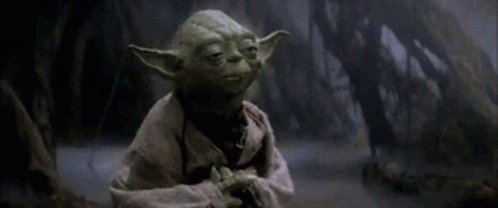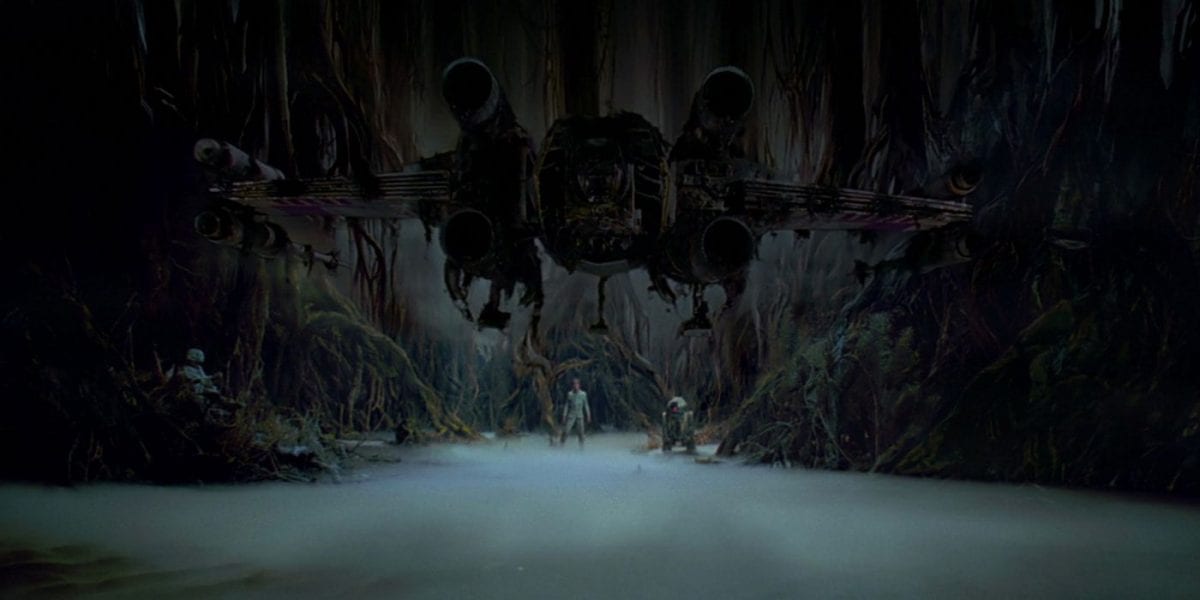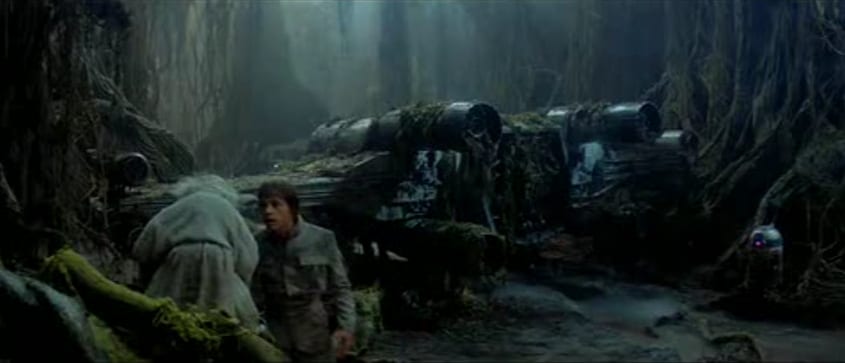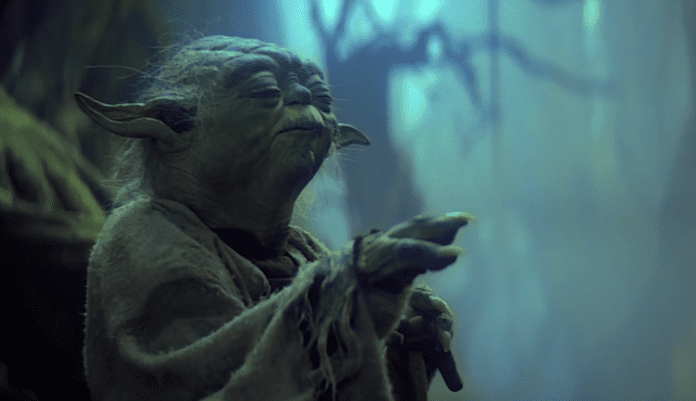On the 40th anniversary of Star Wars: The Empire Strikes Back, I take a dive into how it delivers on one of the most important scenes in the whole Saga.
As we celebrated Revenge of the Sith turning 15 earlier this week, today brings about the big 4-0 for The Empire Strikes Back. The film is jammed packed with a number of powerful moments, not least of which is the shocking reveal that Darth Vader is Luke’s Father. As important as the moment is, there’s another in ESB I feel is even more important; one which highlights the central themes for the Original Trilogy, while cementing it’s place within the modern mythology of storytelling. I’m talking about when Yoda lifts the X-wing from the swamp, and firmly puts Luke in his place.
 This scene encapsulates the central theme of, not only Empire Strikes Back, the entire Star Wars Saga. Star Wars is the epitome of the archetypal journey, and is a shining example of this brand of storytelling. One of the primary themes throughout every film is the notion of overcoming the odds: rooting for the underdog. The Original Trilogy focuses on the plight of a small group of Rebels desperately fighting a war against a massive, galaxy spanning dictatorship. The idea that hard work, and strength of will can overcome overwhelming odds is a central part of the Star Wars mythos.
This scene encapsulates the central theme of, not only Empire Strikes Back, the entire Star Wars Saga. Star Wars is the epitome of the archetypal journey, and is a shining example of this brand of storytelling. One of the primary themes throughout every film is the notion of overcoming the odds: rooting for the underdog. The Original Trilogy focuses on the plight of a small group of Rebels desperately fighting a war against a massive, galaxy spanning dictatorship. The idea that hard work, and strength of will can overcome overwhelming odds is a central part of the Star Wars mythos.
In Empire, you have one of the most diminutive characters (a person whose small, hobbling on a cane, and appears frail enough to be knocked over by a stiff breeze) able to accomplish an incredible feat even the film’s hero couldn’t. It’s a powerful visual and hammers home the idea of overcoming obstacles theme.

More than the imagery, however, the dialog between Luke and Yoda before and after are a large part of what makes this scene so memorable. Yoda’s speech on the nature of the Force, how it binds the universe, and “luminous beings are we. Not this crude matter” still gives me chills to this day. It’s a poignant lesson on understanding and accepting the world around you, even if you don’t fully understand it. Silly as it may sound, it’s a quote I’ve dwelled on often and gotten comfort from in dire times.
Arguably, however, the most important line of dialog in this scene (perhaps rivaling “May the Force be with you” as one of the most quoted lines from all of Star Wars), is “Do or do not, there is no try.” Over the decades, many have contended the statement makes no sense, or at worse, is a negative comment about the effort a person puts into something they want (a funny idea explored even in Star Wars Rebels).

I’ve never felt that was the case. Rather, Yoda’s statement is a remark about how important a person’s mindset is to accomplishing a task. A positive mindset is the key to reaching your goals and having doubts will only hold you back. Don’t go into a task thinking, “I’ll give it a shot”, instead think “I’m going to achieve this goal.” Then do everything in your power to make it happen.
It’s a very profound idea and Luke’s failure makes it all the more impactful. Again, this goes back to the central theme in Star Wars about the ability for people to accomplish seemingly impossible tasks. The Rebels have to stop the Empire, because it’s the right thing to do. Letting evil people remain in control is worth fighting against. If they’d merely ‘tried’ to overthrow the Empire, without any end-goal in mind, they would have failed. Because they believed in themselves and the idea of doing the right thing, they ultimately claimed victory.

But that’s not all this scene has to offer. On the other side of the conversation, after Yoda picks up the X-Wing, Luke tells him, “I don’t believe it.” To which Yoda frankly replies, “That is why you fail.”
Whoa.
Talk about heavy stuff here. Did we just hear someone tell us that the main character failed at something? Gone is the farm boy from the previous film who managed to destroy the galaxy’s most powerful battle station; a hero able to do virtually anything. Now we see Luke’s flaws and shortcomings. If he can fail here, then he can fail elsewhere.
This a powerful statement for a film to make, and one which gives audiences reason to doubt the outcome of our heroes. This keeps you engaged in Luke’s personal journey, rather than just the overall plot. It’s also a great bit of foreshadowing for his upcoming failures in Cloud City towards the end of the film. To make the journey harder and implement a greater amount of tension, it’s important to see Luke fail.

When we see Luke come into Return of the Jedi as a more confident character, able to do badass things we haven’t seen previously in the trilogy, it’s more meaningful in light of this past failure. We’ve witnessed him forced to overcome his own limitations, and lack of faith, in order to accomplish what should have been impossible (the redemption of his Father and overthrowing the Emperor). Because we saw his failure, we’re better able to understand his growth as a character/hero by the end of the journey.
This moment in Empire Strikes Back might be the most important for all of Star Wars. It serves as a testament to the hero’s journey and the point at which we can see Luke as something other than the hero. More so, it offers a poignant lesson on attitude, faith, and acceptance that resonates even 40 years later.















